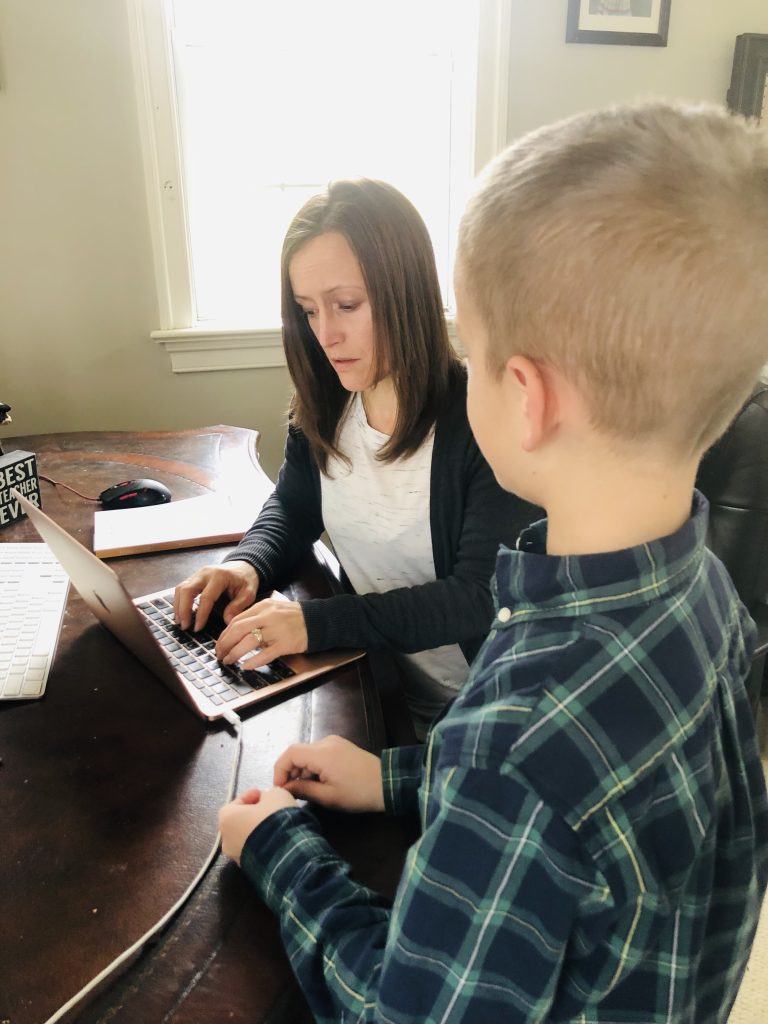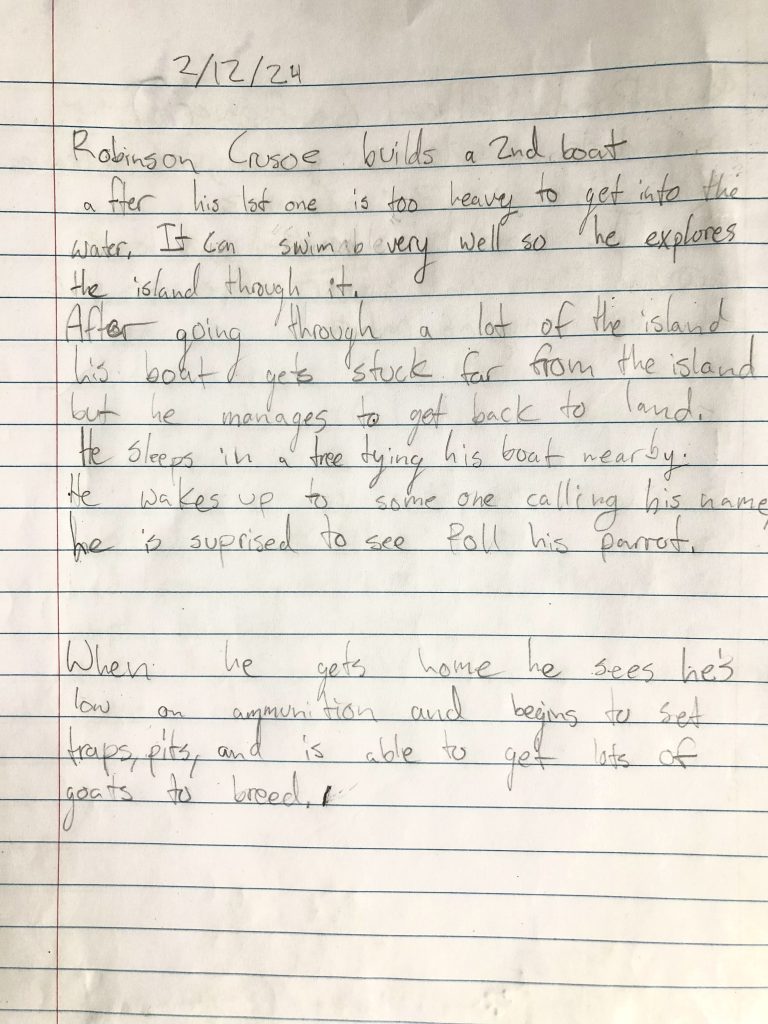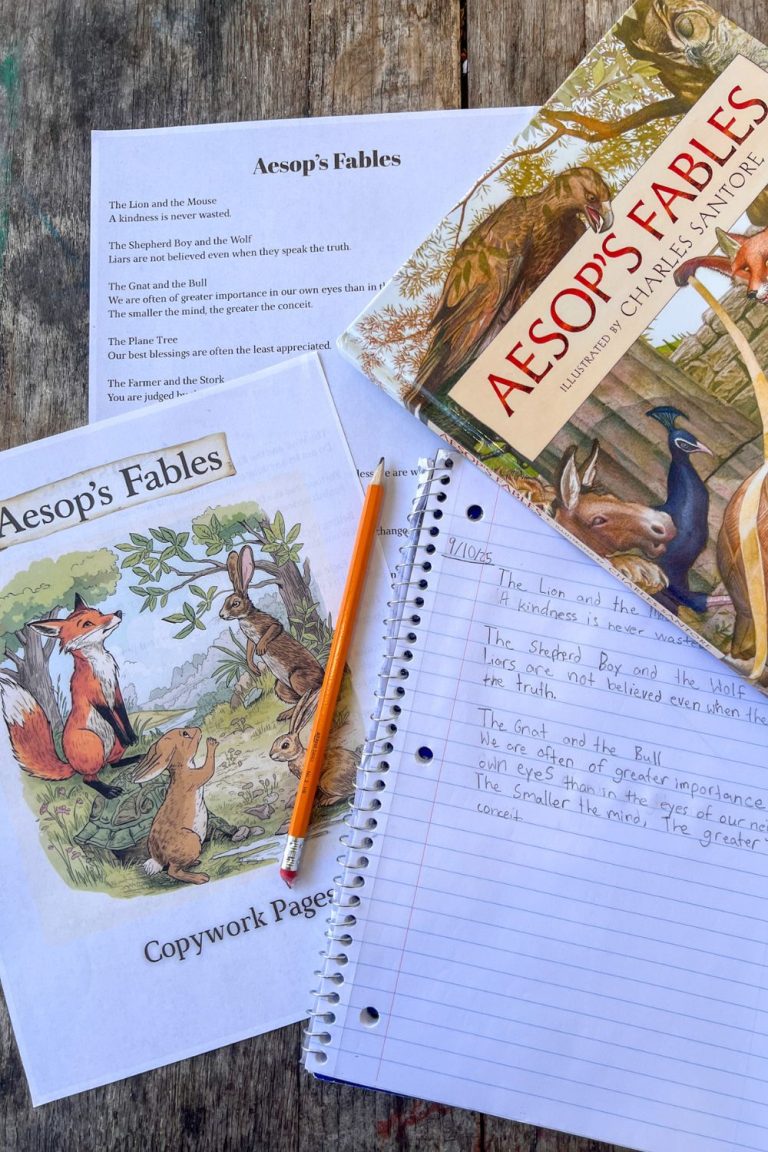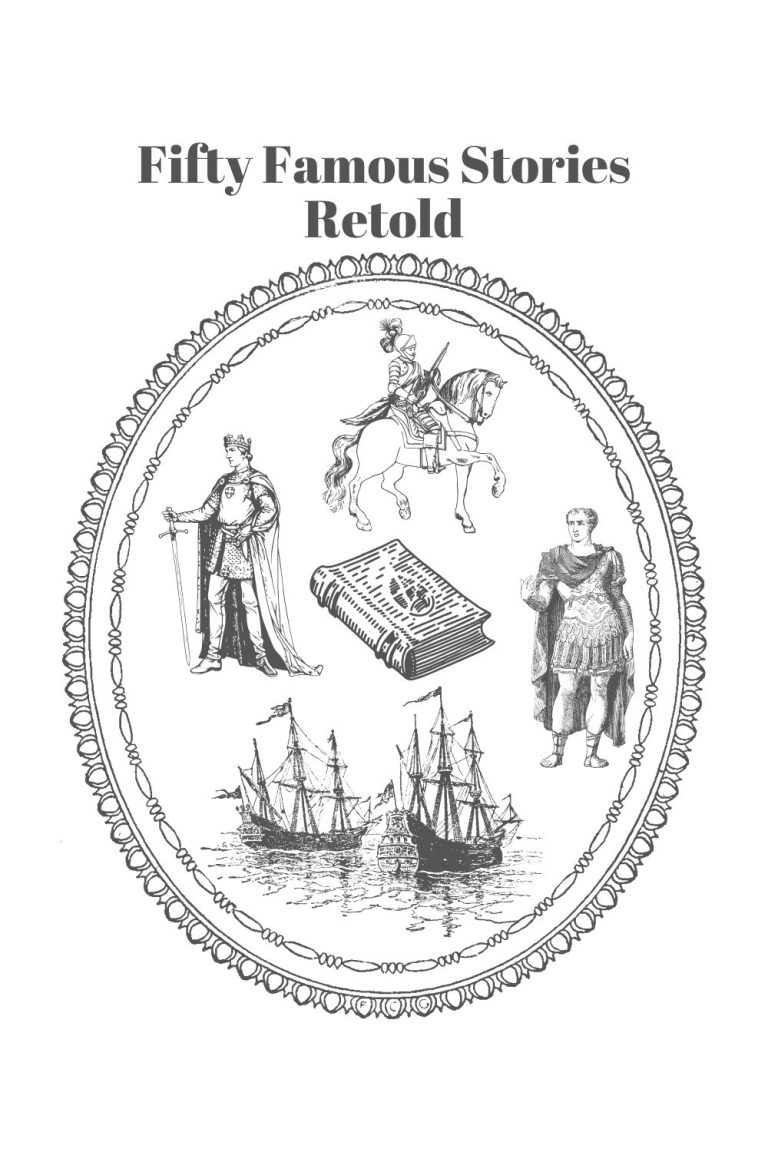How to Do Charlotte Mason Narration in Your Homeschool

What is narration and why is it so effective in producing excellent writers? Learn the very basics of how to do a Charlotte Mason narration beginning with quality literature and moving on to oral and written narrations.
Everything You Need to Know About Narration || How We Do Narration In Our Large Family
The Hidden Gem of Narration
The art of narration is a hidden gem. It’s such a simple tool that I think people tend to either overlook it or overthink it, yet, it is so effective that it’s worth making a regular part of your daily work.
If you are not using narration (and copywork, the twin to narration) in your homeschool, you are missing a powerful tool for teaching writing. Narrating helps kids use their most natural form of expression (telling) to express themselves well, first in speaking, and ultimately in writing.
Whatever writing curriculum you are using in your homeschool, narration should at the very least, be a part of it. It is a supertool. It takes very little time, but works wonders in the brain.
The exercise of consistent narration over a time period produces excellent communicators.
What is Charlotte Mason narration?
What is narration? Narration is simply telling. Whether we realize it or not, we all do narration in one form or another every day.
When you ask your child to tell about her day or explain how she made a cake or describe the scene at the park, you are having her narrate.
Over a century ago, Charlotte Mason re-introduced the world to the practice of narration in her book Home Education. Charlotte Mason’s conclusions about narration were based on the classical education model used in ancient Greece and Rome, but she revived it by using it in the PNEU schools where she taught and by writing about it in her books.
Narrating is the practice of arranging events or ideas to explain yourself to another person so that you both can understand and have a shared experience.
With children, we start with oral narration which after practice, naturally lends itself to written narrations. Learning to write well begins with telling well. Oral narration is the stepping stone to written narration.

Why is Narration so Effective?
When I was studying education in college, we learned about Blume’s taxonomy. As budding teachers, we were learning how to ask comprehension questions in such a way to help kids progress to higher levels of thinking. Instead of asking objective questions with measurable answers, we were taught to ask questions that were open-ended to promote high-order critical thinking skills.
For example, instead of asking a question like, “What did the boy see at the park?” which has a measurable answer, we were taught to ask questions that would make them think more critically. A higher level thinking question might be, “How would you describe what you saw at the park?”
In her book Know and Tell: The Art of Narration, Karen Glass shows the weakness of this approach when compared to the superiority of simple narration.
“A teacher may assume that leading children through a series of questions will teach the children to think and reason for themselves. However, the one who asks the questions is the one who has thought about the material as a whole.” -Karen Glass
Narration skills require children begin with the highest level of thinking. It puts the weight of critical thinking on them.
It replaces testing. A thorough narration from a child is so much better than having them answer random multiple choice questions or fill in the blank on a quiz. Actually, a child who has narrated a story well could easily create a short quiz or test on the subject matter because she has digested the information and knows it thoroughly.
Try Narration
When kids have to recall, assemble, and sift through the details of a story, they are cementing the story in their minds.
If you doubt the effectiveness of narration, I challenge you to try it yourself. Read a short story or excerpt from a book and try retelling it to your spouse or a friend. It’s harder than you think!

How do you teach homeschool narration?
Narration is the natural way for children to learn to write. Below are the three basic steps to take to teach narration in your homeschool.
#1 Quality Literature is a Pre-requisite to Narration
If you want to see the positive results that so many have experienced with narration, you need to read quality literature to your kids. Miss Mason discouraged parents from reading “twaddle” and challenged them rather to choose living books for children.
Kids can only express what they possess. If you read them silly cartoon-style books with little depth, you can’t expect their narrations be anything deeper than casual table conversations. Kids need a rich feast of ideas and these can only come from quality literature.
Ambleside Online has a wonderful selection of living books throughout their curriculum. This is usually the first place I look for excellent book choices.
How do you determine if a book is a living book? I love how Jaime from The Unlikely Homeschooler describes them in her article What is a Living Book Anyway?.
“Charlotte Mason called them living or full of life. Some have referred to them as whole or complete, lacking in nothing. Still, others describe them with words like imaginative, original, or full of human touch.”
From a very young age your children should be reading the very best books.
#2 Oral Narration
If you are reading excellent living books to your kids, the next step in learning to narrate is oral narration. You are probably already doing this with your younger students when you ask them about their day, ask them what they had for supper, or what happened at grandma’s house. Start with their interests and let them naturally tell you the things that are important to them.
When your child is ready to start narrating stories in the early years, begin slowly. I like to read a short passage, maybe a paragraph or two, and have them narrate after parts of the story rather than giving a whole narration at the end of a single reading.
It’s hard for younger children to hear the whole story and then give a re-telling. It’s easier to break it up into bite-sized pieces.
It may help them for you to model a narration. Show young children by example how to sort the main idea from specific facts and how to include the most important parts in order.
Don’t Be Discouraged With Your Beginning Narrator
If your child’s early narrations leave much to be desired, don’t be discouraged! In their younger years, they are developing their ability to pay full attention and this is hard work that takes several tries.
Often, for the first or second reading, my new narrators can hardly remember anything. The problem is that they aren’t used to paying close enough attention to be able to tell back the details. It takes repeated practice to develop a habit of attention.
I’ve noticed a marked improvement with my youngest children after several weeks of trying narration. Becoming an active listener is a skill that takes practice.

#3 Written Narration
After your kids have been doing oral narration on a regular basis, they will be ready for written narration. This usually happens around age 10 or 11, but it will vary for individual children. Written narrations require no additional thought. They are simply putting pen to paper from the narrations they have been giving all along.
It is important that older children can handwrite fluently so that the gross motor skills do not take a long time or hamper their ability to express their thoughts. If they wish to type a narration, that works well too!
When our kids begin, I start by typing their oral narrations as they tell them to me. When we finish, I have them read what I wrote out loud. This is a great way to help them see that the written narrations are essentially the oral narrations in writing.
It also helps them see areas they need to improve. I write down every “um” and “like” and when they re-read the typed passage, they can see ways to improve their writing.
Start by having students write one narration per week and gradually work up to more. Since older students usually do the readings on their own by this point, remind them to write the narration in their own words, not copying from the passage.
How We Do Narration in a Large Family
It can be a challenge to be consistent with narrations when you have multiple children. In our family of ten kids, I aim to listen to at least one oral narration from each of my younger kids every day. For the older kids, I expect them to do two weekly narrations on their checklist with the understanding that I may randomly check it at any time.
At the beginning of every school year, I give each of our older kids a narration notebook. Together we decide where to fit written narrations into their weekly checklist. Having a notebook in hand helps homeschool moms to see the progress from the beginning to the end of the year.
Another thing I have done in the past is to focus on different aspects of our homeschool for a certain period of time. Last year I spent three months focusing specifically on narration. I read a section from George Washington’s World by Genevieve Foster at Morning Time and asked the kids to write a narration afterward. They were writing about four written narrations a week. It was a short, intensive practice and they made a lot of progress.
One of the easiest ways to check multiple narrations in a big family is to have the older kids read their narrations aloud as part of Morning Time.

Narration Examples
Below are some narration samples I’ve collected from our children. They are copied as written with no corrections.
Oral Narration from the story The Three Billy Goats Gruff, almost 6-year-old boy
There was this little tiny goat and then he went across the bridge to make himself fat, but then he said to the billy goat gruff, “Wait til the big billy goat gruff comes.” And then he wasn’t actually the biggest one, it was the second one. And then it was like “TRIP TRAP, TRIP TRAP.” And then the big billy goat gruff came. Then he got across to make himself fat and then when they went home and they were too fat, if the fat fell off, they would already be fat still.
Narration from 50 Famous Stories Retold, the story of “George Washington and His Hatchet”, 7-year-old girl
This was an oral narration that I typed as she told it.
There was a little boy named George and one day his father gave him a hatchet. But one time because he loved cutting down things with it, so one time he went outside with it and he saw this one tree that he wanted to cut down. So he went over and he cut it down, but then his father came back right then and his father was really mad because he saw that the cherry tree was chopped down. Um, so then he went inside, but he was really really mad. Then George came and told him that he chopped down the cherry tree. And then his father said, he said, he would lose a dozen cherry trees rather than him not telling the truth.
Narration from a chapter of Child’s History of the World by Virgil Hillyer, 9-year-old boy
This was an oral narration that I typed as he gave it to me.
King Charles I was king at that time and um, they would fight wars with this other land and before they fought wars, they would feast before they went out to wars and do hymns and stuff. Oliver Cromwell helped raise up the army, like train them. So they lost a lot of battles and one time King Charles I was found guilty of committing some crimes, I think. So they killed him in the end and made Oliver Cromwell king. He was a really good king, but he was strict. Later when he died, a Stuart, Charles II became king and he was a really wicked king because he kind of took Oliver Cromwell out of his tomb. I think later one of his servants murdered him and that was the end of the story.

Narration from Robinson Crusoe, 11-year-old girl
This was copied from her written narration.
Robinson Crusoe builds a 2nd boat after his 1st one is too heavy to get into the water. It can swim very well so he explores the island through it.
After going through a lot of the island his boat gets stuck far from the island, but he manages to get back to land. He sleeps in a tree drying his boat nearby. He wakes up to someone calling his name. he is suprised to see Poll his parrot.
When he gets home he sees he’s low on ammunition and begins to set traps, pits, and is able to get lots of goats to breed.
Narration from Story of the World about Catherine the Great, 13-year-old girl
This was copied from her written narration.
Catherine was the empress of Russia, even though she wasn’t even Russian. One of her uncles married the Empress of Russia. The Empress wanted a wife for her heir, Peter. She thought Catherine was perfect! Catherine was quickly whisked off to Moscow to meet Peter. He was handsome, but was rude and foolish. She told her mother she didn’t want to marry him, but she didn’t listen. Soon they were engaged, but days before the parts, Peter got small pox. He recovered, but Catherine was horrified when she saw him again. His face was twisted, and he had red scars all over him. Reluctantly, they got married. Soon after the Empress died, Catherine led a revolt. She sent soldiers to the town Peter was in to surround it. Accidentally he was killed by a soldier guarding him. Catherine became the Empress of Russia. She helped conquer Alaska, and expand Russia’s borders.

Frequently Asked Questions
- How do you make narration a consistent, expected part of the day? There are many different ways that you can approach this and it is important that you find the way that works best for you. In our large family, I am not able to check every narration every day. What has been more helpful is to focus on it at certain times. They have it on their checklist and it is required of them, knowing that I may randomly check it at any time. I may focus on checking and reviewing narrations more closely for a few months in a row. Or I might designate one day a week to review my kid’s narrations. As far as oral narrations with younger kids, I try to have each child do at least one a day.
- How many narrations do you have your kids do each week? I try to have younger kids give at least one oral narration a day. For older kids, I generally require two narrations per week. If it is a time when I am focusing more on narration than at other times, I may require more.
- How long should a narration be? I have my kids start with half of a notebook page and work up to a page or a page and a half. Some kids need to learn to be more concise and not include all the particulars, while other children need to add more descriptions. After several narrations, these peculiarities usually iron themselves out.
- Do you do every reading? I don’t ask each child to do every reading, however, since I am usually reading to more than one child, I will let them all know to listen so they can narrate and I usually pick one person to narrate. This way, they are all listening with the intention of narrating so they pay attention more closely.
- How much should you instruct or correct their written narrations? Occasionally, I give guidance regarding the mechanics of the writing (capitalization, punctuation, spelling), but it’s important to let it be their own work. Trust the narration process; kids naturally improve with consistent practice.
- What can I do if my kids get bored with narrating? Encourage kids to do creative narrations. Mix it up. Try narrating a picture study or a field trip. You can also allow them to use props like legos, sketches, or play dough to show their narrations.
- How do you check in with your kids at the end of the day in a timely manner? I don’t check in with every child every day, but I do try to regularly be checking their work. Just knowing that mom might check is usually enough incentive for them to do their best.
- Do you require a high school student to narrate? Absolutely! This is where the most growth happens! In the high school years, they can fine tune their skills.

Further Narration Resources
You may enjoy these other similar posts on the blog about teaching writing in your homeschool.
Simple Step-by-Step Guide to Homeschool Writing
Helpful Habits for Writing Well #1: Creating a Literate Environment
Helpful Habits for Writing Well #2: Copywork
Helpful Habits for Writing Well #3: Narration
Helpful Habits for Writing Well #4: Notebooking
In this post Living Books and Narration With All Boys, I interviewed a fellow homeschool mom, Sarah, who shares her best resources and ideas for teaching narration specifically to boys.
I love the very basic way Sonya Schaeffer explains narration in this article. She breaks it down step-by-step in a way that makes it very easy to understand.
You may also enjoy reading her book Your Questions Answered: Narration.
If you search for “narration” on the website simplycharlottemason.com, you will find a plethora of blog posts on topics such as how to do narration in high school, ideas for narration, narration with special challenges, narration with multiple children, and more.
Ambleside Online also answers frequently asked questions about narration in this article.
Books
*This post may contain affiliate links which means I may make a small commission at no extra cost to you.
The first place to start if you want to understand narration is to read Charlotte Mason’s book Home Education.
Karen Glass has also written the book Know and Tell: The Art of Narration. This is an excellent book that has been very helpful to me in my understanding and practical application of narration.
Whatever curriculum you are using to teach writing, I hope you include narration for some of it. It is an under-utilized, yet highly productive tool!







